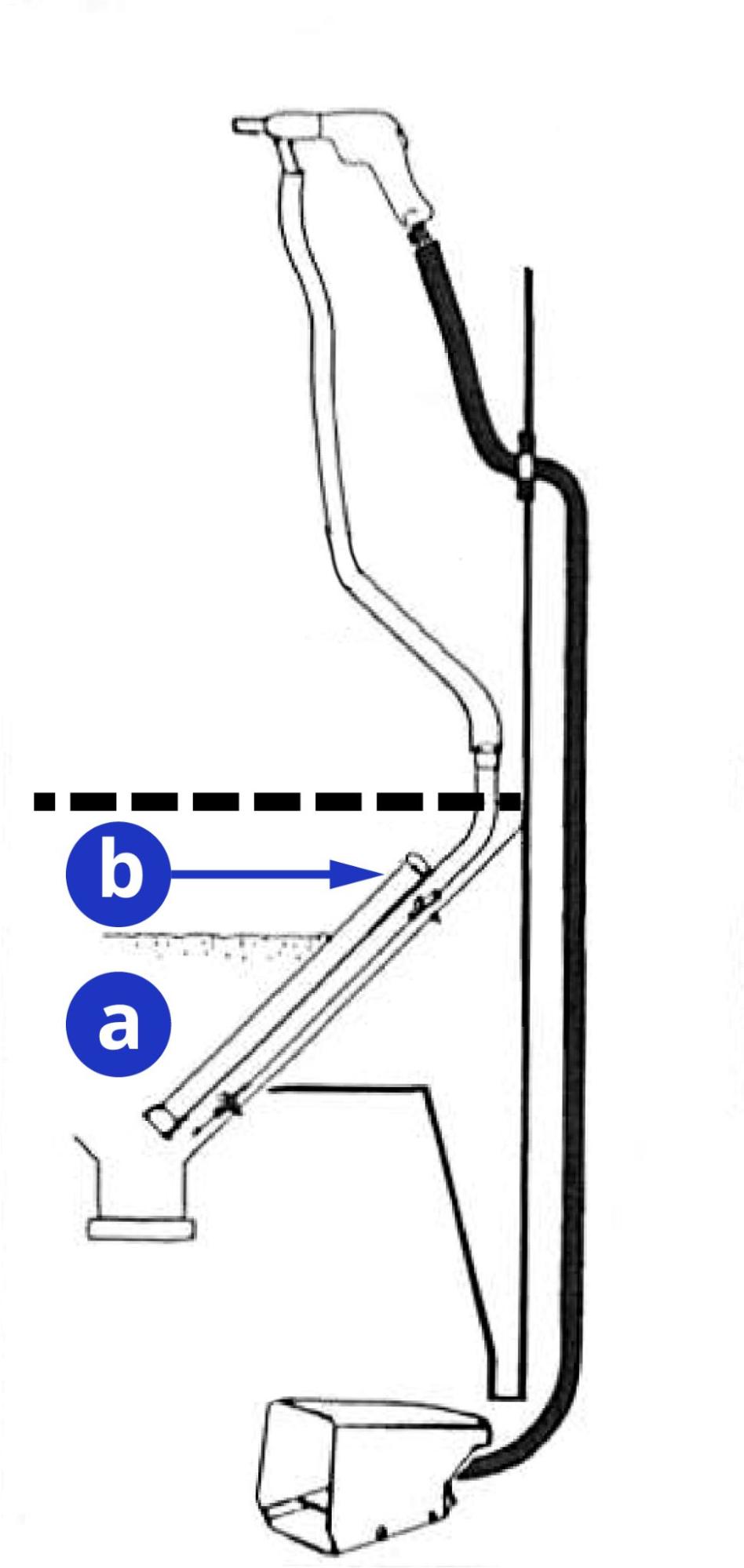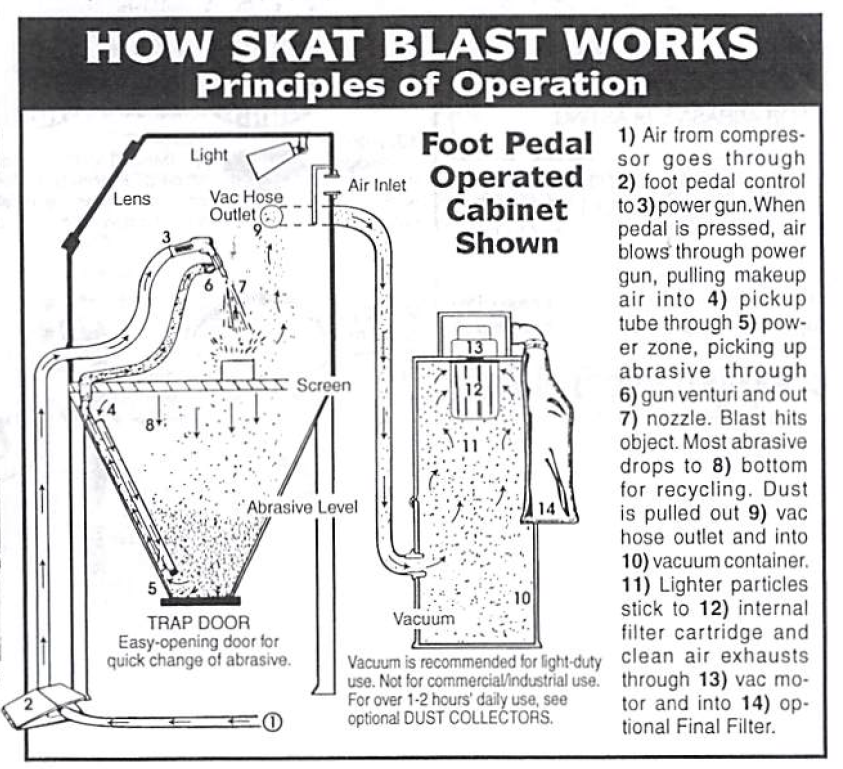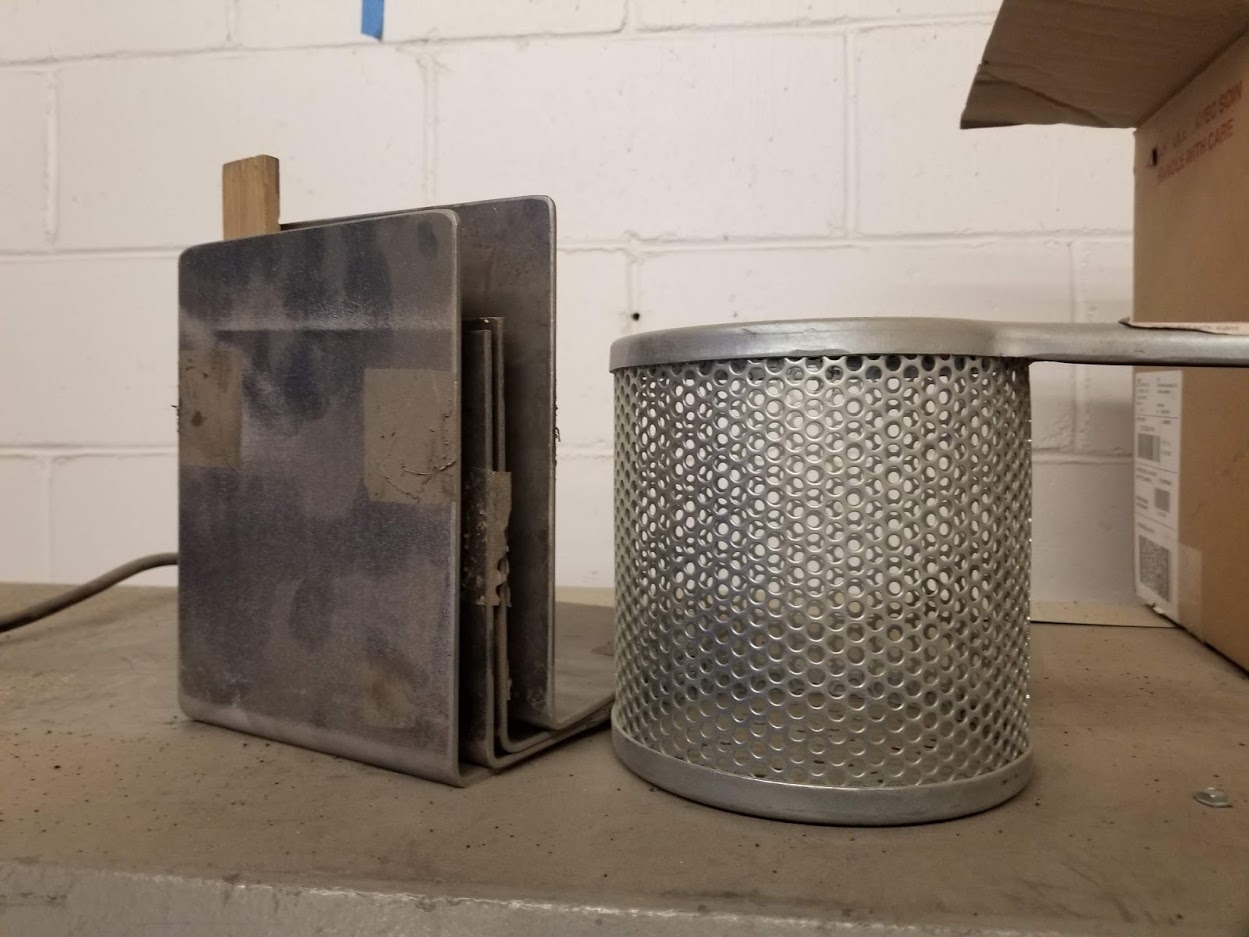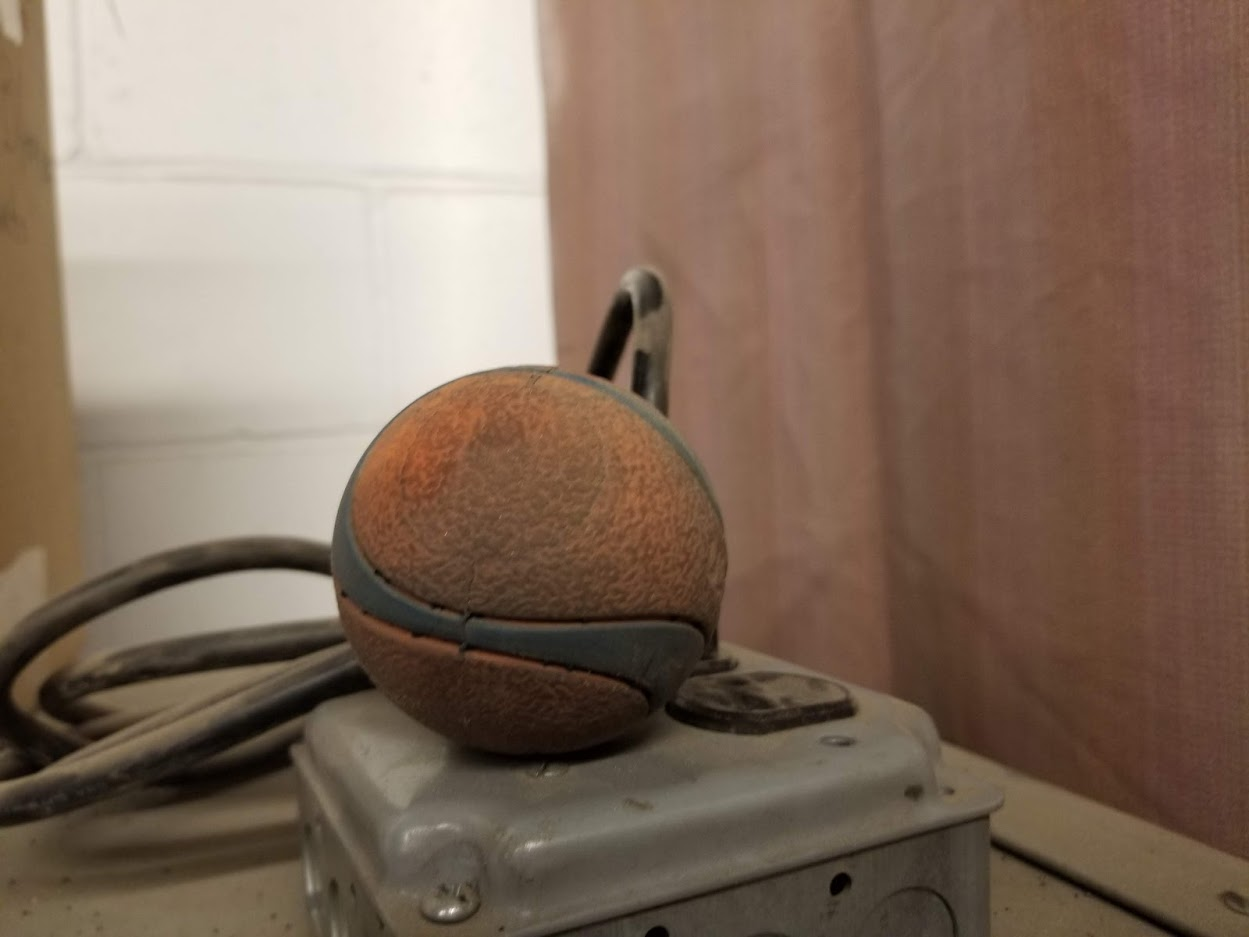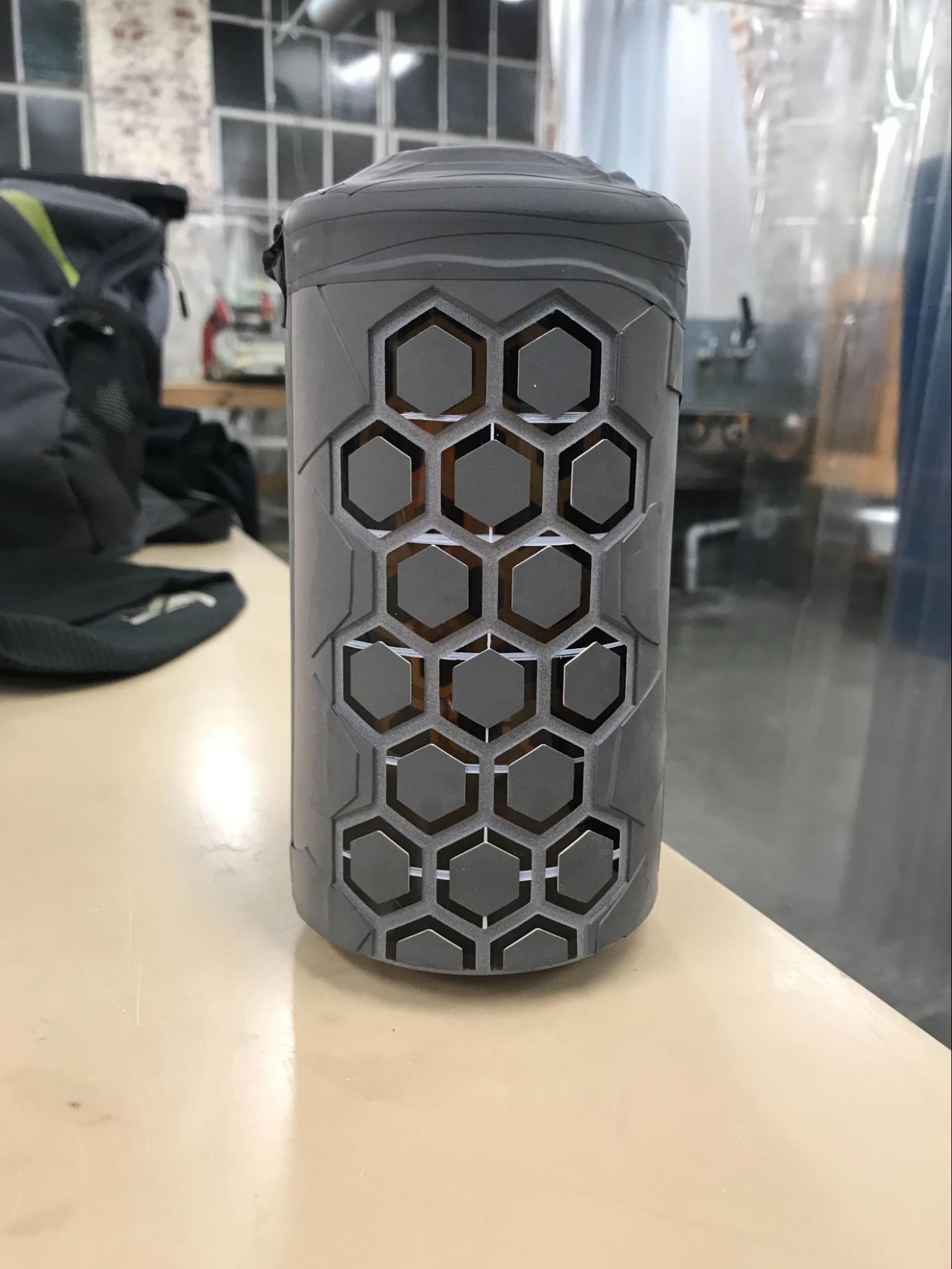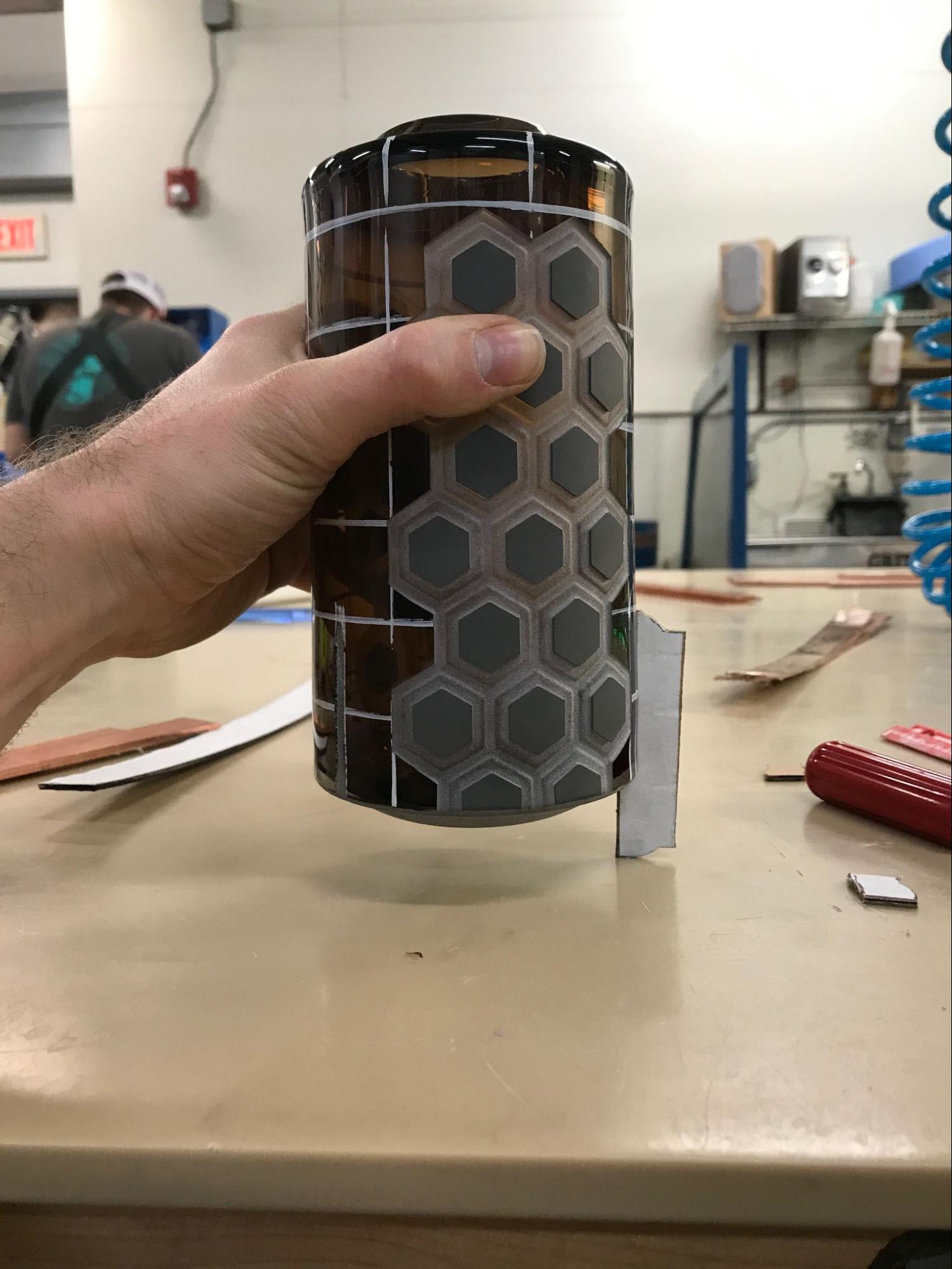Tool Tutorial
(Link to PDF Tool Tutorial)
Warnings
ð« Do not point the gun at the window, gauntlets, or anything other than the item being abraded
â ï¸ Ensure all doors are closed and properly latched before use
â ï¸ Always disconnect air before working on blasting gun
See the Safety Section for more information.
Tool Anatomy



- Power Switch - on/off switch
- Maintenance
TagÂTag - Manually tracks the usability status with Green/Yellow/Red cards ViewportÂViewport and protectivefilmÂfilm - allows the user to see what theyâre doing. The replaceable protective film helps preserve the viewport from abrasive damage.- Access
DoorsÂDoors andLatchesÂLatches - allow access to the interior of the cabinet - Siphon
hoseÂhose - pulls media from the hopper to the gun - Air
HoseÂHose - provides air pressure to the sandblaster - Blasting
gunÂgun - directs the stream of abrasive - Foot
PedalÂPedal - must be pressed for blasting to occur - Screen Filter- filters debris as material is removed
- Media
hopperÂhopper - holds the abrasive media underneath the cabinet - Trap Door - Easy opening door for quick-access change of abrasive
- Gauntlet
GlovesÂGloves - permanently affixed heavy gloves that allow the user to manipulate items inside the cabinet with the doors closed. - Dust
CollectorÂCollector - keeps (most of) the dust generated by the sandblasting process from escaping into the vicinity of the sandblaster



Tool Safety
Common Hazards
Dust
The dust produced by the sandblaster is hazardous for your respiration
- Always ensure the access doors are properly latched before sandblasting
-
Ensure your
PPEÂPPE is appropriate and properly rated for respiratory protection - Always wear a respirator when adding/removing abrasive media or doing anything inside the cabinet
- Keep others safe by vacuuming any built-up dust on or around the cabinet
Abrasive Damage
Anything inside the cabinet will be damaged by the abrasive.
- Do not point the gun at the viewport
- Do not allow the abrasive blast to touch or abrade the gauntlets
Overloading
A specific amount of media must be present in the sandblaster - too much or too little will cause problems.
- Do not load more abrasive if you see poor sandblasting performance! Raise the issue to the tech on duty.
Prohibited Materials
Wet, Oily, or Grimy Materials
Wet or oily materials should not be used in the sandblaster, as it will cause the abrasive to gum up and become useless very quickly.
Large fragments of surface debris (e.g. chipped paint) can also get stuck in the feed tube and prevent abrasive from properly siphoning into the blasting gun.
The pool of abrasiveÂabrasive can also be worn down with excess debris.
To avoid this, always remember to do the following before blasting:
- Ensure the material is clear of oil and moisture (e.g. clean with soapy water and dry with a towel)
- Remove dirt or any loose material from the surface by hand before attempting to sandblast.
Resilient Materials
Resilient materials (e.g. items dipped in vinyl, or covered in soft paint or powder coat, etc.), while not prohibited, will not respond well to the abrasive flow, as the particles will tend to bounce off rather than remove the material.
It is strongly recommended that you remove as much of such materials as possible through chemical or manual means, then use the sandblaster to finish up removal in tight crevices and similar.
Setup
CheckÂCheck the level of abrasive supply in the hopper.EnsureÂEnsure that part(s) to be blasted are clean, dry, and oil-free.UnlockÂUnlock latches on the door.- Place and
secureÂsecure part(s)Âinside. CloseÂClose the door andLockÂLock the latches.EnsureÂEnsure that the foot pedal is locked in the on positionBeginÂBegin operation
The (a) abrasiveÂabrasive level must be below the (b) air inlet. The level of abrasive in the hopper should be roughly â
of the total depth (between 25 and 50 pounds of abrasive). If there is insufficient abrasive in the blast cabinet, or it does not appear to be abrading the material, please submit a maintenance request. Do not attempt to correct the abrasive level yourself as this can cause unnecessary contamination of new abrasive and prevent the sandblaster from functioning well.
Operation
- Turn
onÂon the switch on top of the cabinet to turn on lights and start the vacuum. PutÂPut your hands in the gauntlets.AimÂAim the gun and the part at about 45 degrees to one another, a couple inches away.SqueezeÂSqueeze thetriggerÂtrigger to begin blasting.MoveÂMove the gun and part closer together or further apart to adjust the blast area.SweepÂSweep the gun back and forth smoothly over the area to be blasted.
Before operation, always ensure both latches are firmly secured.
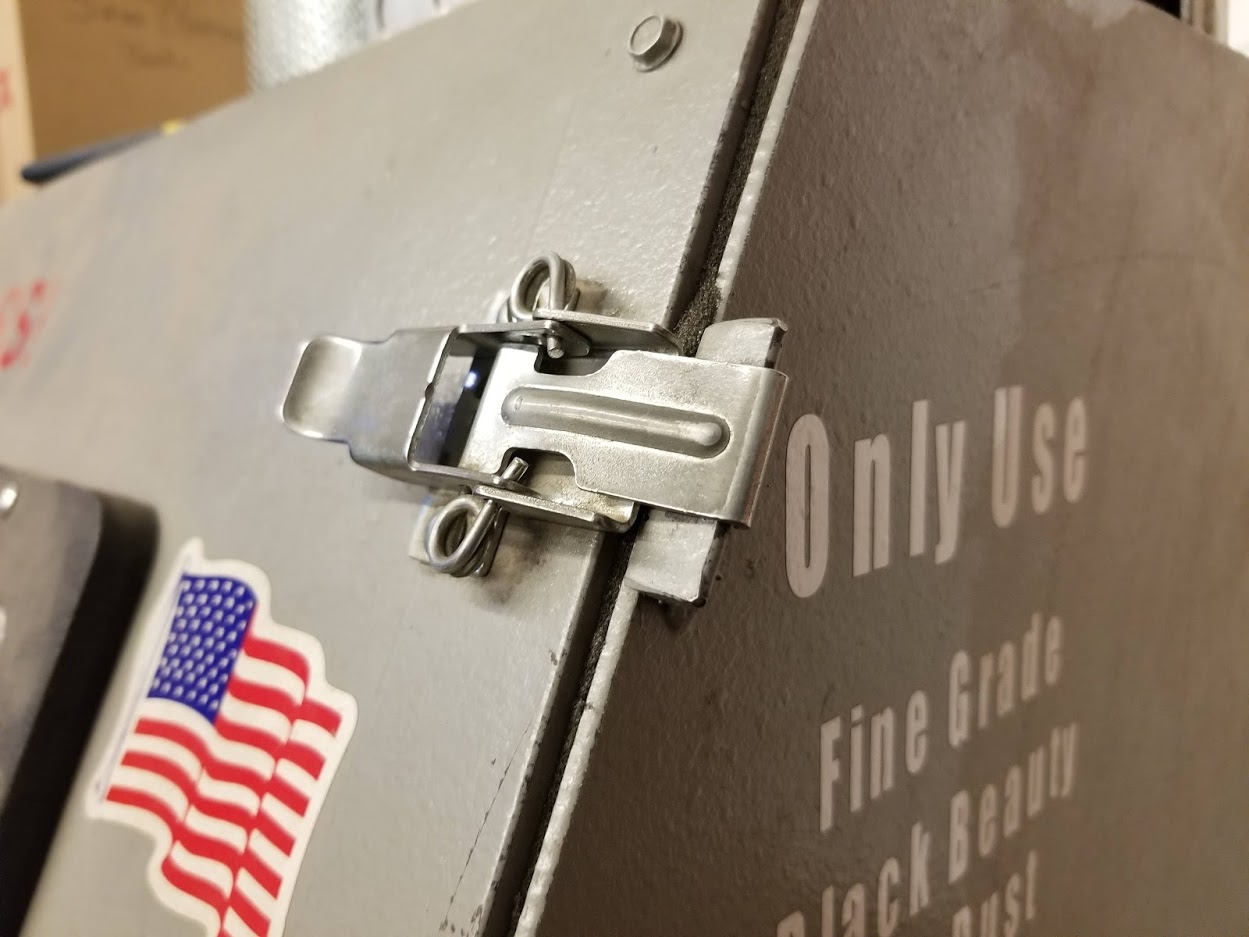
HOW IT WORKS
the compressor goes through (2) foot pedal control to (3) power gun. When pedal is pressed, air blows through the power gun, pulling makeup air into (4) pickup tube through (5) power zone, picking up abrasive through (6) gun venturi and out (7) nozzle.
Blast hits object. Most abrasive drops to (8) bottom for recycling. Dust is pulled out (9) vac hose outlet and into (10) vacuum container. (11) Lighter particles stick to (12) internal filter cartridge and clean air exhausts through (13) vac motor and into (14) optional Final Filter.
Workholding
L-brackets (as seen on left) can be used to support workpieces via clamps, magnets, or gravity.
Small parts can be contained inside the basket (as seen on right).
|
Small parts must be safely secured, lest they take wing and fly about the interior. Use of scrap wood, clamps, baskets, or strong magnets may be required; just be sure to use clean, dry, and oil-free materials such as metal or wood (which you donât mind having abraded).
Larger parts can be held in the gauntlet not holding the gun (so long as there is clearance to avoid affecting the gauntlet with the abrasive), or allowed to rest in the cabinet under their own weight.
Back-Purging
A rubber ball makes an ideal stop for back-purging. =====
Press the tip of the siphon gun directly against a piece of rubber or similar material.
Then, squeeze the trigger for a few seconds.|
Cleanup
TurnÂTurnoffÂoff the switch on top of the cabinet.- Sweep or vacuum
upÂup any extraneous dust on or around the cabinet - If necessary,
wipeÂwipe the interior of the viewport with a dry cloth to improve visibility. InvertÂInvert (turn inside-out) the gauntlets, so that they can more easily dry out before the next user.Note any maintenance needs or concerns on the tag and atprotohaven.org/maintenance|
Maintenance Requests
If you encounter any of the issues listed in the Inspection area or have any other issues with the tool not working properly:
Update the physical Maintenance Tag at the machineð¢Green can be used without issueð¡Yellow can be used withcautionâRed cannot be used without hazard to either the user or the equipment
Record issues atprotohaven.org/maintenance. This notifies our staff and volunteer maintenance crew of any issues.
Troubleshooting
| Common Issues | Possible Causes | Resolutions |
|---|---|---|
| No abrasive coming out of the gun | Insufficient level of abrasive | Ask a volunteer to add more abrasive, so that the hopper is no more than â full (roughly 25-50 pounds of abrasive) |
| Abrasive not piled in hopper | Shake the hopper gently with your knee, to encourage the abrasive to settle. | |
| Siphon hose not in abrasive | Make sure that the siphon hose is in the abrasive hopper, and that there is enough abrasive to cover its lower end well | |
| Siphon hose clogged | Back-purge the gun and line, by pressing the tip directly against a piece of rubber or similar material, then squeezing the trigger for a few seconds. | |
| Abrasive action seems poor | Bad angle or distance between gun and part | Experiment with different distances and angles between the gun and the part |
| Material being removed is soft or resilient | Remove as much of it as possible outside the blaster, using chemical (e.g. paint stripper) or mechanical (e.g. wire brush, scrapers) means. Softer materials take longer to be blasted away. | |
| The abrasive may be worn down from use, or gummed up from inappropriately damp or oily material. | Please submit a maintenance request, in order to have the abrasive replaced. |
Special Setups
Resists
For etching materials such as glass, or protecting some portions of a part from being abraded, you may wish to use some form of resistâ¦extra material used as a type of stencil to shield those surfaces you wish to protect.
Resists can be made of various materialsâ¦almost anything that is not easily abraded and can be securely fastened to the part will work.
For example, you could use the Vinyl Cutter to produce a resist that you could adhere to a glass bottle; after blasting the glass, peel the vinyl resist away, to reveal a clear pattern in the frosted glass.
Oversized Parts
If you wish to blast parts that are physically too long to fit into the cabinet with the doors closed, it is possible to construct a temporary extension out of materials such as duct tape and heavy cardboard, which you can fasten to the end of the cabinet with the door open.
Consult with a staff member before doing so, so that they can verify the safety, dust resistance, and structural integrity of the extension.


